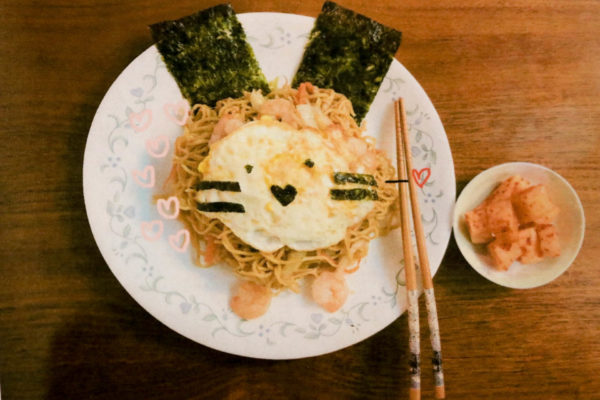
By Madelyn Moua, Staff Photographer
At FVHS, cultural projects for world language classes are projects that revolve around learning about language in context.
Spanish cultural projects are standard, a task worth cultural points usually ranging from 30 to 50. Spanish classes offer a variety of cultural opportunities, like attending a Spanish concert, participating in Día de Los Muertos, making a piñata, cooking a full course meal with Spanish-speaking origins and more. After the task is completed, students work on a write-up, talking about how the project furthered their understanding of Spanish-speaking cultures. Usually, the project is due at the end of the school year.
French and Spanish teacher Gemmo Casabar said, “I think any way that allows students to connect with the target culture allows them to be more engaged with the culture. As a result, students are more interested in learning their chosen language. As teachers, we can provide the resources, but it’s up to the students to really connect and find a way that the culture resonates with them personally. The culture is there, and we, as world language teachers, try to help them make it their own.”
French cultural projects are not considered standard compared to the ones assigned in Spanish classes. There are no projects worth points. Instead, cultural aspects of French-speaking regions are integrated into the curriculum and taught throughout the school year. Actions like greeting with cheek kisses, as opposed to an American handshake, are just some of the gestures taught in the introductory course French 1. By constantly learning and performing cultural practices, French classes do not assign cultural projects.
“In the variety of French classes, we perform different cultural activities that are thematic, that align with the chapter’s themes. So they’re a little bit more specific and a little bit smaller, more formative and more ongoing. We have different cultural themes as well, so we apply those in our own ways that fit our individual teaching styles,” said French teacher Ashley Houlette.
Unlike French or Spanish classes, Japanese classes do a mix of the other two language classes’ culture explorations. There is no end-of-the-year project, but, similarly to French classes, Japanese classes integrate their cultural aspects throughout the year. However, their cultural tasks are arguably more difficult than those of French classes. After every break (i.e. Thanksgiving Break, Winter Break and Spring Break), there is a cooking cultural project due when students return. Along with cooking projects, students are required to create their own mangas and animes, key parts of Japanese culture.
Japanese teacher Sachi Katashima said, “In Spanish class, you can pick which culture project to do, like going to the restaurant or cooking. In Japanese class, we don’t really give them an option. We just give everyone the same project. I think, for the Japanese culture, we don’t really have that kind of freedom as a country. For instance, in Japanese society, everyone job-hunts at the same time, everyone starts working at a new company at the same time. However, in America you get to job-hunt anytime you want throughout the year. When you start working in the United States, you work whenever a position is open, but it’s not really like that in Japan. So I think the way Japanese classes assign culture projects reflects how Japanese society is. We don’t really get to pick, we get assigned, and that’s how we do it.”
Regardless of the way that students engage the culture of their world language, world language teachers affirm that engaging in a culture will spark students’ interests and motivate them to learn more about their selected language.
“If you’re learning French, Spanish, Japanese or any other foreign language, get out there and experience the culture. Really immerse yourself because you’ll enjoy it a lot,” said Casabar.





